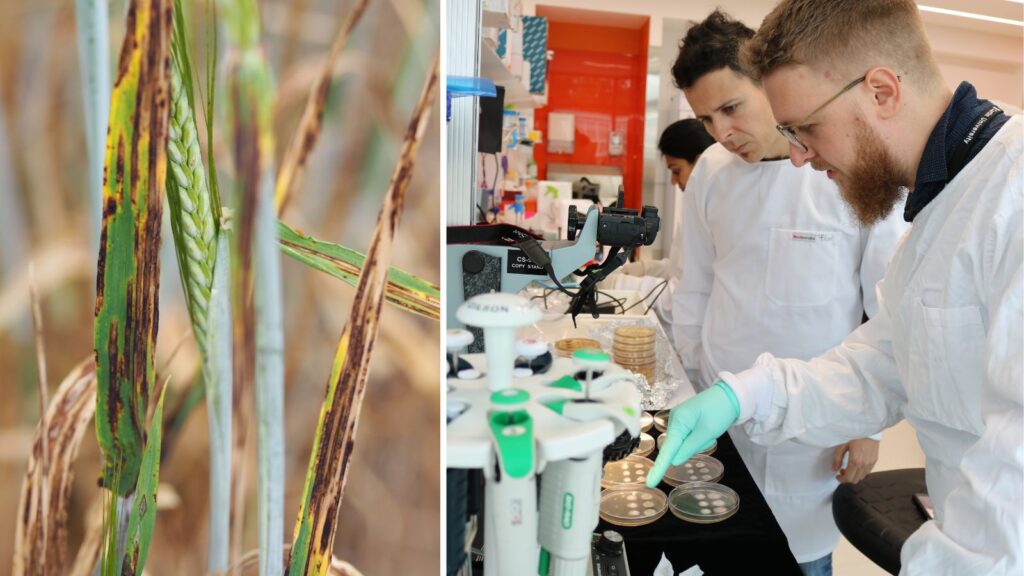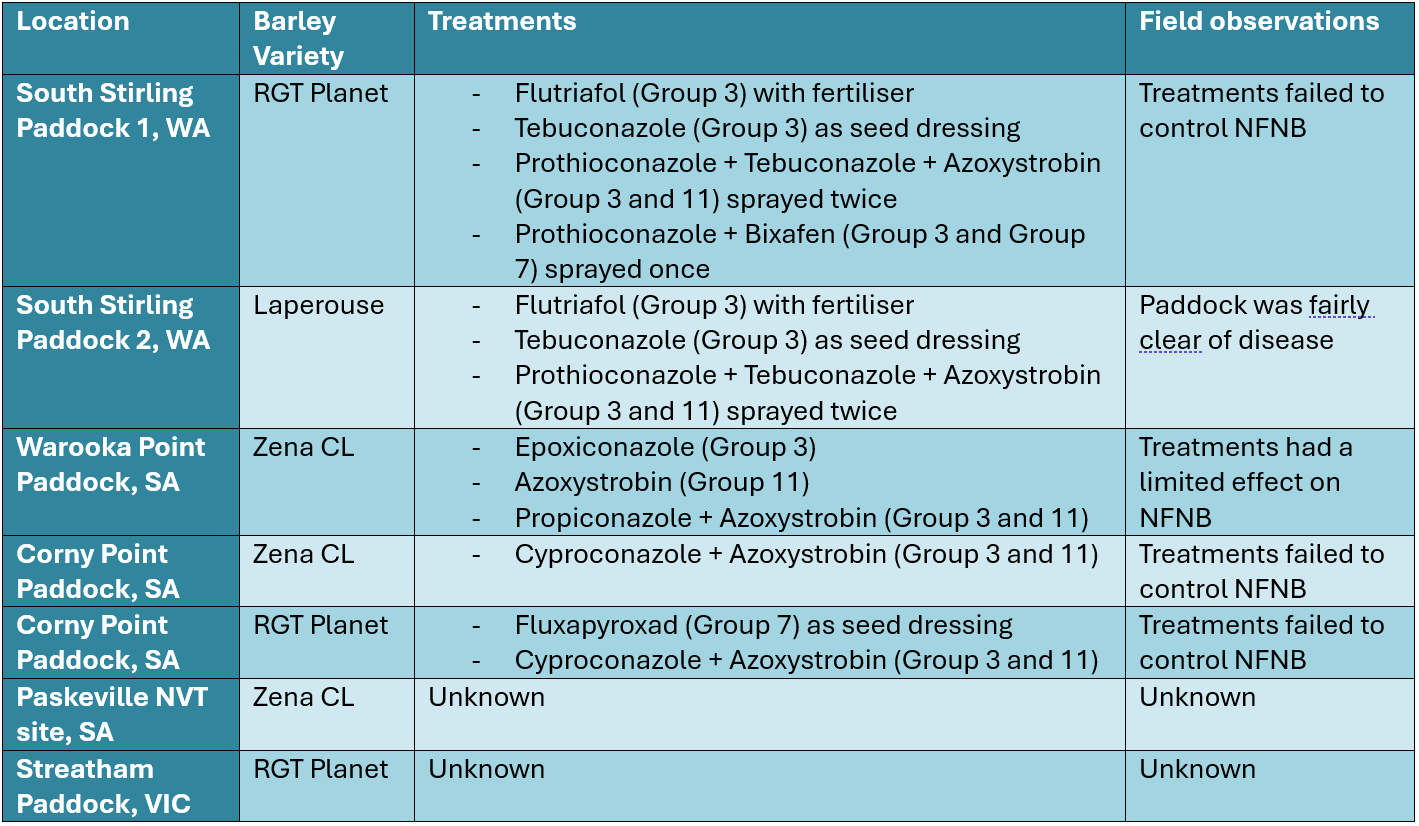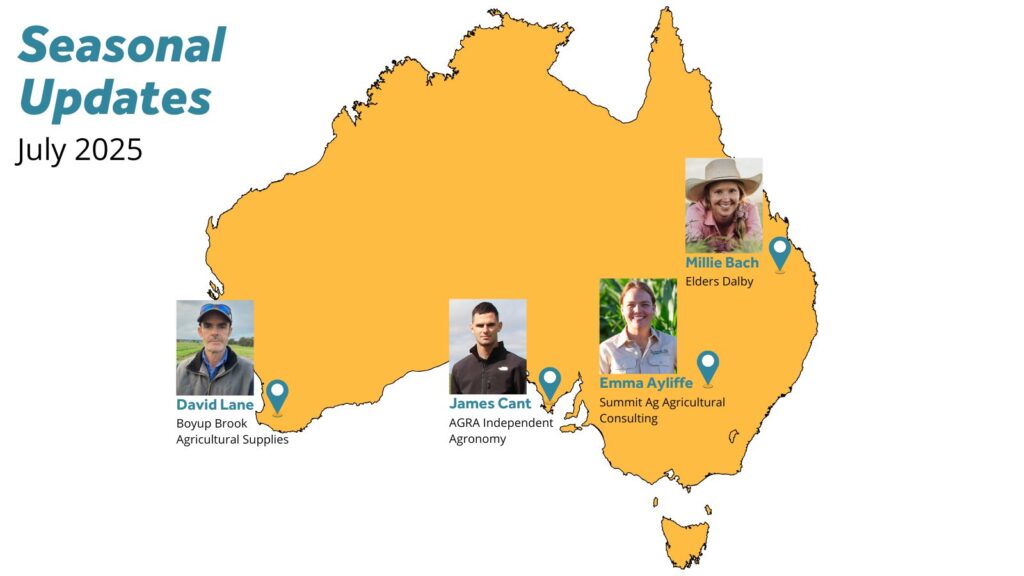Like triple threat all rounder Adam Gilchrist, good with the bat, behind the wicket and arguably not bad with a ball, we now have a triple threat pathogen at the beginning of their career ready to shake things up in three states around Australia.
This new triple threat has been found in the Yorke Peninsula SA, Streatham Vic, and South Stirling WA, where samples of the barley disease net form net blotch (NFNB) have been detected with a combination of resistance or reduced sensitivity to all three available fungicide groups (Groups 3 (DMI), 7 (SDHI) and 11 (QoI)).
While this may reduce the options available for controlling NFNB, with all available fungicide groups now compromised, not all is lost.
Fungicides still have a role to play, and so do Australian growers when it comes to keeping these fungicides in the game.
What we found and where
Fungicide resistance or reduced sensitivity to Group 3, Group 7 and Group 11 fungicides has been around for some time now. But the main distinguishing factor in the latest samples is that mutations associated with fungicide resistance and reduced sensitivity to all three groups have been detected together, in individual NFNB isolates – hence the triple threat, now known as the ‘triple mutant’.
Plant pathologists across the country, including Kith Jayasena (WA Department of Primary Industries and Regional Development), Tara Garrard and Hari Dadu (South Australian Research and Development Institute), and Joshua Fanning (Agriculture Victoria) received diseased barley samples from crops in their respective regions, including some as part of routine sampling. They sent a combination of NFNB fungal isolates and diseased leaf samples to CCDM for testing.
Let’s break down what was happening in each paddock that these samples came from.
There are multiple features that make these recent detections unique compared to previous detections of fungicide resistance in these regions. CCDM researcher Wesley Mair has been right at the forefront of many of our fungicide resistance detections over the years.
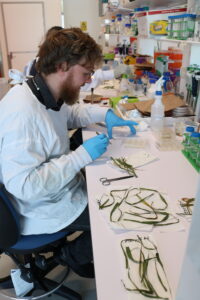
CCDM’s Wesley Mair testing barley samples for fungicide resistance.
“For the WA paddocks, 41 isolates were tested, and 39 of these isolates contained the triple threat combination of mutations,” said Wesley.
“40 of these 41 isolates carried the F129L mutation, which is associated with reduced sensitivity to Group 11 QoI fungicides. This is the same mutation, which was present in the SA and VIC samples, combined with different mutations associated with fungicide resistance to the other two fungicide groups.”
These cases are the first time we’ve seen this specific mutation linked to fungicide failure in the paddock. And the first time we have seen this mutation appear in WA and Victoria.
“The lack of control using QoI fungicides is not necessarily due to the emergence of this one mutation. The resistance is likely amplified by the combination of the triple mutations, making it a particular threat,” said Wesley.
However, we can’t call fungicides ‘out’ just yet. Getting the batting side out takes more than one bowler. This triple mutant threat is an effective combination, but fungicides still have a role in controlling other NFNB populations elsewhere, that don’t have fungicide resistance mutations.
The Peninsula’s ongoing fight against NFNB in SA
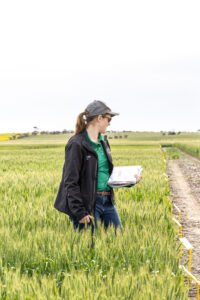
SA agronomist, Claire Tucker in the field.
Claire Tucker, an agronomist with Nutrien Ag Solutions in Minlaton for the last 8 years, is on the ground working in the Yorke Peninsula, SA, where these samples were taken.
“In 2023, we had the perfect storm of conditions for NFNB. We had early rain events along with a lot of volunteer barley, which carried the disease. And a lot of Planet barley was being grown, which is particularly susceptible to NFNB,” said Claire
“This means that early in the season, the disease spread straight away onto emerging barley crops, and we were trying to rein it in from the start, which is very hard to do.”
One of the driving factors of fungicide resistance is high disease pressure and fungicide resistant mutants can carry over between seasons on stubble.
Despite the news of the triple mutant, Claire says growers have already made strides in the right direction in terms of management for this disease and the resistance that has formed, but they can’t declare their innings just yet.
“A lot of growers have upgraded their varieties to grow barley with better resistance against NFNB. Because we are in a drought right now, fungicide resistance isn’t the focus of most growers’ worries. But it could still easily happen again, and this problem isn’t going away, so it needs to stay in the front of our minds as we look to disease management.”
Better resistance and better performance – a great example in WA

CCDM’s Fran Lopez-Ruiz in the labs.
CCDM’s Fran Lopez-Ruiz, leader of the fungicide resistance group, says “the goal now is to limit the spread of these triple mutants using integrated disease management practices that don’t rely on fungicides. Limiting their spread is the only way to maximise the lifespan of the available fungicides”.
“Using fungicides to control other barley diseases can still select for resistance in any NFNB pathogens that may be present. So, if we want to maximise the lifespan of current fungicides, we need to ensure we are utilising non-chemical strategies to manage disease.”
The South Stirling paddocks from WA serve as a perfect example of how utilising barley cultivars with improved resistance to NFNB can give this triple threat a run for its money.
Both paddocks from South Stirling had similar management of their crop rotations, stubble and fungicide applications. The main difference was the variety grown, and the corresponding susceptibilities to NFNB.
Paddock 1 grew RGT Planet, a variety that is Susceptible – Very Susceptible (SVS) to NFNB. This was the paddock which had a confirmed fungicide failure and saw NFNB wreak havoc in the field.
Meanwhile, paddock 2 grew Laperouse, a variety that is Moderately Resistant – Moderately Susceptible (MRMS) to NFNB. In this paddock, the crop was able to withstand the disease irrespective of fungicide treatment.
“This is a prime example of how planting less susceptible varieties can be a powerful tool to combat disease,” says Fran.
“When fungicides are compromised, like with this triple mutant, a lower yielding variety may even prove more profitable than high yielding varieties with greater susceptibility to disease. So, growers need to choose carefully and balance their yield potential with strategies like this.”
So what do we do now?
With all three fungicide groups compromised, unfortunately, there aren’t many options when it comes to chemical management to limit the spread of this triple mutant. So, we need to continue the focus on non-chemical agronomy practices!
The Australian Fungicide Resistance Extension Network (AFREN) has identified five key actions to avoid and manage fungicide resistance in any crop and region. Some additional advice that builds on these five core principles has been released in the latest GRDC Paddock Practices including:
Avoid susceptible crop varieties
- Shift to barley cultivars with improved resistance to NFNB.
Rotate crops
- NFNB only infects barley, so planting pulses, oilseeds and alternative cereals in a succession of break crops will help prevent disease build-up.
Use non-chemical control methods to reduce disease pressure
- Sow later if possible (while balancing yield), to avoid the warm and damp periods that are favourable for disease.
- Encourage airflow through the canopy to reduce humidity, which could include using wider row or plant spacings or grazing with livestock.
- Reduce inoculum between seasons by grazing, rolling or cutting standing barley stubble at the start of the season.
- Eliminate all volunteer barley and potential green bridge hosts such as barley grass, to help prevent disease from carrying over.
Learn more about the triple mutants that have popped up across Australia with the following resources:
- To read GRDC’s Media Release ‘Net form net blotch triple fungicide resistance detected in WA ‘, click here.
- To read GRDC’s Paddock Practice ‘Triple fungicide resistance detected in Yorke Peninsula barley net form net blotch’, click here.
- To read Agriculture Victoria’s media release ‘Be alert for triple fungicide resistance in barley net form net blotch’, click here.
- For an AFREN factsheet on management of net-form net blotch, click here.
If you suspect fungicide resistance in your paddock, contact the CCDM fungicide resistance group at frg@curtin.edu.au



